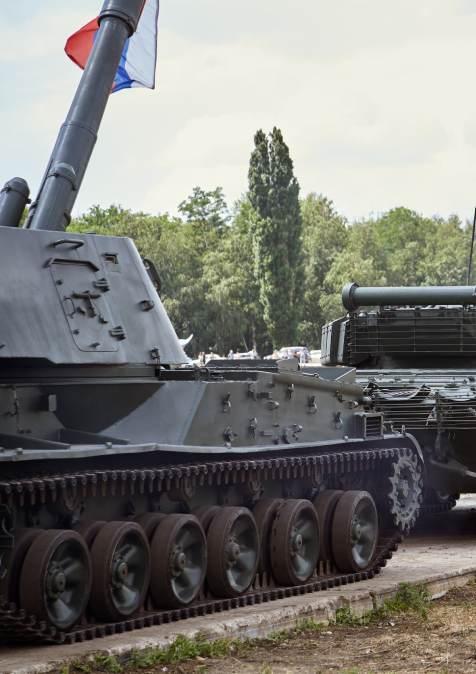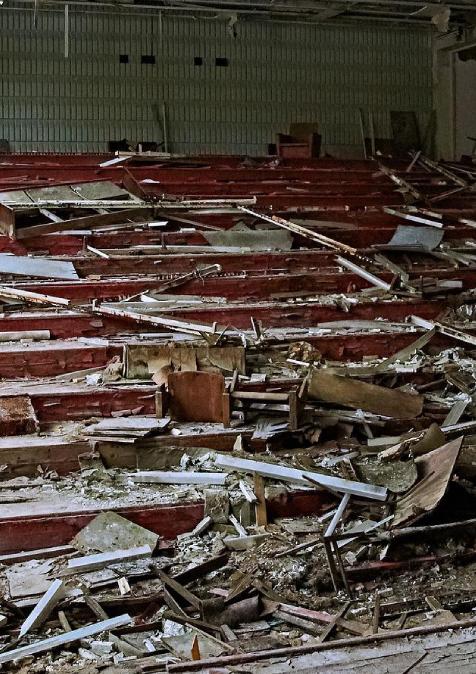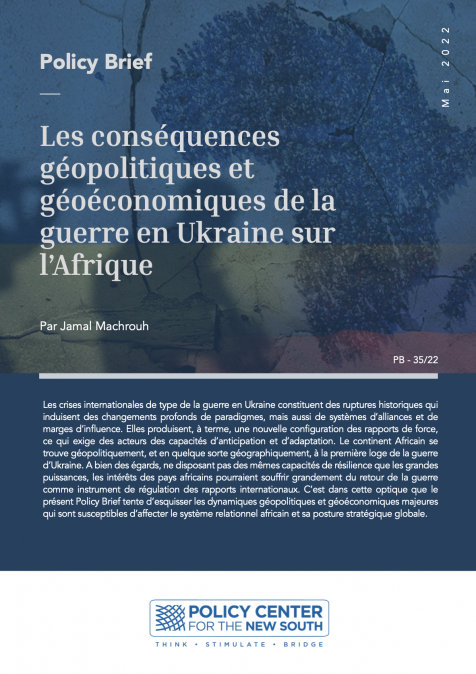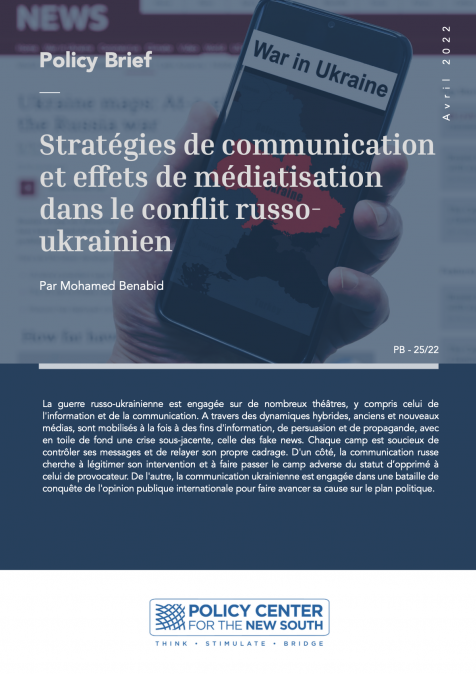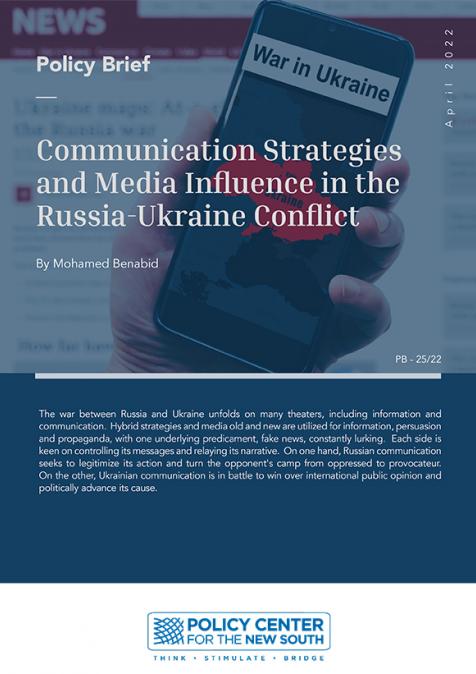Publications /
Opinion
A tragedy of historic proportions
The war is gruesome and may not end for months or years. Not ending with the white flag of surrender, but total depletion and exhaustion, men and missiles, tanks, and terror. The battlefield is hell, as it is in all wars. A nightmare and human folly. “We are learning in Ukraine how to fight”, admitted the former President of Lithuania, Dalia Grybauskalte, “and we are learning how to use our NATO equipment. It is a teaching battle”. Yes, this politician admits, “it is shameful for me, because Ukrainians are paying with their lives for these exercises for us.”(New York Times). Shame is not part of blood, sweat and tears, the trial of robots, satellites and computers, tanks and drones will help the infamous Industrial Military Complex to develop even more devastating and precise armament. Ukraine “is the best test ground, as we have the opportunity to test all hypotheses in battle”, confirms Mykhailo Federev, until March of this year Ukraine’s Vice Prime minister and Minister of Digital Transformation, “and introduce revolutionary change in military tech and modern warfare” (New York Times). “The Russian invasion of Ukraine is a tragedy of historical proportions”, observed Joshua Huminski of the Center for the study of the Presidency & Congress in Washington, DC. (January 13, 2023). It’s also offering strategists a glimpse of the future of modern warfare, from which countless lessons have already been learned.
The war in Ukraine “presents a novel, if unexpected opportunity to modernize Western arsenals, increase interoperability and standardization, and build for the future.” The war in Ukraine has become the “largest testing ground for Artificial Intelligence-powered autonomous and uncrewed vehicles in history”, believes Tristan Greene (December, 21, 2022) of “The NextWeb”. While the use of military robots is nothing new - World War II saw the birth of remote-controlled war machines and the US has deployed fully autonomous assault drones as recently as 2020 - What we are seeing in Ukraine is the proliferation of a new class of combat vehicles, or un-crewed planes, also known as drones. To counter Iran supplying advanced Shahed - 136 remote controlled drones to Russia, Turkey and the US have provided Ukraine with their own drones, the US Switchblade and the Turkish Bayrakfar TB2. Not long-ago Ukraine’s military began using newly developed drone - jamming guns known as SkyWipers to thwart Russian separatists in the eastern Donbas region. “The SkyWipers can divert or disrupt drones, reported Lara Jakes in the “New York Times” by blocking their communication s signals.” This system was developed in Lithuania and had been on the market only two years before they were given to Ukraine through a NATO security assistance program.
Valuable lessons
The SkyWipers are now only one kind of drone jammer being used in the war. They have been singled out as a highly coveted battlefield asset - both for Ukraine troops and enemy forces that hope to capture them. The American made multiple rocket launcher or HIMARS has been critical to Ukrainian success-even as officials have learned valuable lessons about the rate of maintenance repair those systems require under heavy use. HIMARS rockets have a range of up to 50 miles and are guided by GPS. CNN (January 16, 2023) jubilated about how Ukraine has used its limited supply of HIMARS missiles to “wreak havoc on Russian command and control, striking command posts, headquarters and supply depots”. “This tool has been an eye opener”, as defense officials said, adding that “military leaders would be studying this for years”.
Real world battle testing
Since last summer, Ukraine and its allies have been testing remote-controlled boats packed with explosive In the Black Sea, culminating in a bold attack in October 2022 against Russia’s fleet off the coast of Sevastopol. The US and Germany have supplied Ukraine with similar boats. The use of remote-controlled boats could become particularly important, military experts said, showing how warfare at sea may play out as the US and its allies brace the future naval aggression by China. The US has also supplied Kyiv with a real time information technology system known as “Delta”. The software developed in coordination with NATO had “barely been tested in battle” revealed the “New York Times”. This system collects real time maps and pictures of enemy assets, combined with intelligence, including from surveillance satellites, drones, and other government sources - the tool will decide where and how Ukrainian troops should attack. Delta’s first real test came in the weeks immediately after the Russian invasion in February 2022 as a seemingly endless Russian convoy was heading towards Kyiv. Drones overhead tracked its advance. The information was collected, analyzed, and disseminated through Delta’s targeting tool, at the end helping Ukraine’s military to force a major Russian retreat. “That was the very first moment when Delta capabilities were realized at max” Lara Jakes quoted a Ukrainian Defense Ministry’s statement. Since its first major success 15 months ago, Delta has since helped identify more than 1500 confirmed Russian targets across the country any given day- with hundreds of them eliminated “within 48 hours”.
A rare opportunity
Lara Jakes wrote that “the test runs are helping senior officials and defense planners in the United States and its allies decide how to invest military spending over the next two decades.” The war has also offered the western alliance “a rare opportunity to study their own weapon systems perform under intense use”, reported CNN, and munitions both sides are using to score wins in this hotly fought modern war. Ukraine is “absolutely a weapons lab in every sense because none of this equipment has actually been used in a war between two industrially developed nations”, said one CNN source familiar with western intelligence,” this is real world battle testing.” About four years ago Putin celebrated a Russian weapon, whose price is estimated at 10 million dollar each—the hypersonic missile “Kinzhal”(December 25, 2019, CNN). At a Russian Defense ministry board meeting, the Russian president triumphantly stated that only one nation was in possession of such a weapon, capable of accelerating after launch to Mach 4(4900 km) and able to reach speeds up to Mach 10; or ten times as the speed of sound—Russia. A weapon all but unstoppable, “Kinzhal”, the envy of the world. A few weeks ago, in the night of May 4, 2023, the complacency of Moscow’s military establishment was dented in, of all places, the neighborhood of Kyiv, the Ukrainian capital: Ukrainian generals announced, reported “Reuters” (May 16, 2023), that a volley of Russian hypersonic missiles , allegedly six, had been intercepted by an American made missile defense system, known as “Patriot”, which never was conceived for a showdown with a hypersonic missile. Classical missiles, but supersonic faster than the speed of light? Fake news, psychological warfare? Perhaps, the Ukrainians presented remnants of missiles, the missile, the Wunderwaffe? Possibly fired from an aircraft, other weapons, the “Kalibr”, a 6.5-million-dollar cruise missile, were launched those days, perhaps, from ships located in the Black Sea. Even as the traditional warfare is under way, including the annihilation of civilian neighborhoods and infrastructures, advances in technology and training “are being closely monitored for the ways they are changing the face of the fight”(New York Times) perhaps shaping warfare for generations to come. US operations officers and other military officials have also tracked how successfully Russia has used cheap, expandable drones that explode on impact, provided by Iran to decimate Ukraine’s power grid, stated Nicholas Khon, Associate professor in the Department of Politics at the University of Otago (New Zealand), “has always been the ultimate testing ground for technology and tactics”, he insisted in “Newsroom” (November, 21, 2022). “Russia’s war in Ukraine will be no different. The death, the pain, the tears are the same, for sure, this war is different, developing its inventions and innovations towards the future, eventually invading cyberspace and science fiction scenarios, conquering reality. It is also the first major conflict, reported the BBC (October 6, 2022) in which both sides have become so reliant on space. “Space has become, the BBC points out, the unseen frontier in the war in Ukraine”. More than 5000 satellites have been deployed in space, hundreds of them are dedicated military satellites - the US, China, and Russia having the largest number. Until very recently Ukraine had none—until patriotic citizens started a fundraising campaign to buy a satellite for its Armed Forces. The SAR (Synthetic Aperture Radar) satellite of the Finnish company ICEYE has proved to be extremely effective - in just two days of its usage the Russian military damages exceeded 16 million dollars - “This is the first conflict, in which a country has been using commercial satellite imagery to tell a story”, concluded Jack O’Connor, director of the Master’s in geospatial intelligence program at Johns Hopkins University and a former CIA officer. Ukrainians are using it to defeat disinformation. “When the Russian government denies specific attacks and casualties, satellite images can disprove those claims. They can also serve as evidence in front of international courts and the court of public opinion, says O’Connor. Combatants are relying on spaced based positioning, navigation, and timing (PNT) to conduct precision strikes on key targets, with Russia’s missiles using its own Glonass positioning satellites to find their targets. Most recently the US has supplied Ukraine with GPS guided Excalibur artillery shells - more accurate than the so-called dumb ammunition. Radio frequency providers like Hawk Eye 360 and Spice Global use satellites to track Russian GPS jammers. In a world of ubiquitous drones and overhead surveillance, said CNN, “it’s very hard to hide nowadays”.
The ongoing war has accelerated the US Defense Department and intelligence community’s embrace of commercial satellite communications and earth observation, noted “Spacenews” (December 23, 2022). Satellites coupled with NATO weapon systems have helped Ukraine mount a formidable defense. Or to quote professor Khon, “Kyiv’s success reflects the marriage of Ukrainian skill and bravery, with western technology and tactics”. Lessons learned, so it seems: the European parliament and European member states agreed to contribute 2.4 billion Euro to a six billion project planned with the European Space Agency (ESA), to establish a satellite constellation named “IRIS-2”, “Spacenews” reported. “The efforts and energy extended on the European level to move the initiative forward a record speed, believes Thierry Breton, European Commissioner for the Internal Market, reflects on the importance of “IRIS-2”in an increasingly contested geostrategic environment”. Satellites like Elon Musk’s “Starlink”, the world’s first and largest satellite constellation, using a low orbit, as well as “Maxar”, provider of geospatial intelligence which on January 4, 2023 signed a new one year contract worth up to 35.8 million dollar with the US National Geopolitical Agency) and “Planet Labs”, the leading provider of global daily Earth data, are giving critical support in keeping Ukraine’s internet connection on line. Without such high-tech help Ukraine would turn blind, engulfed by darkness without escape.
The opinions expressed in this article belong to the author.

